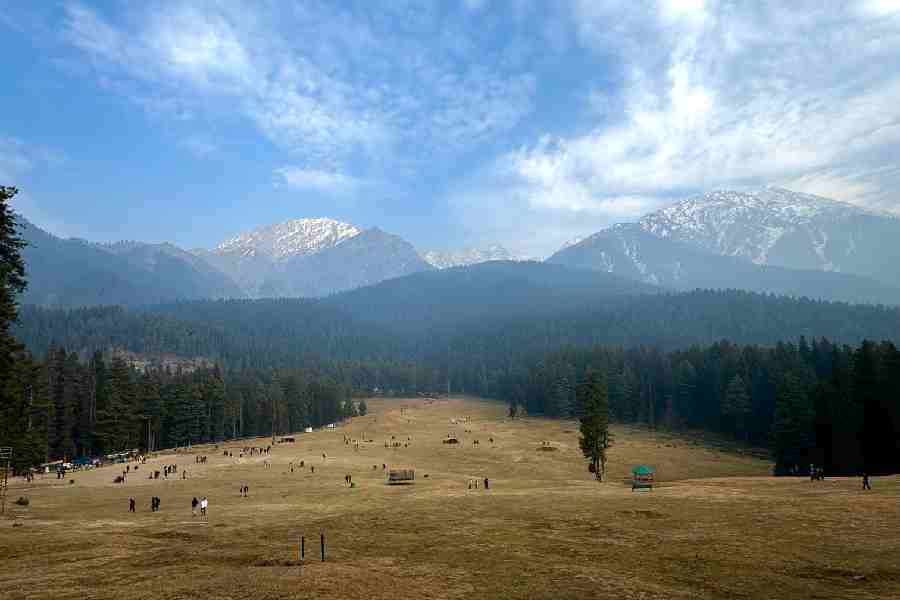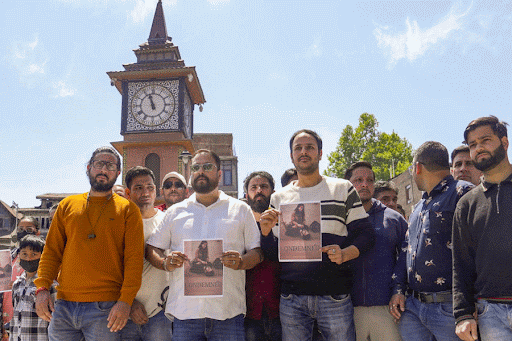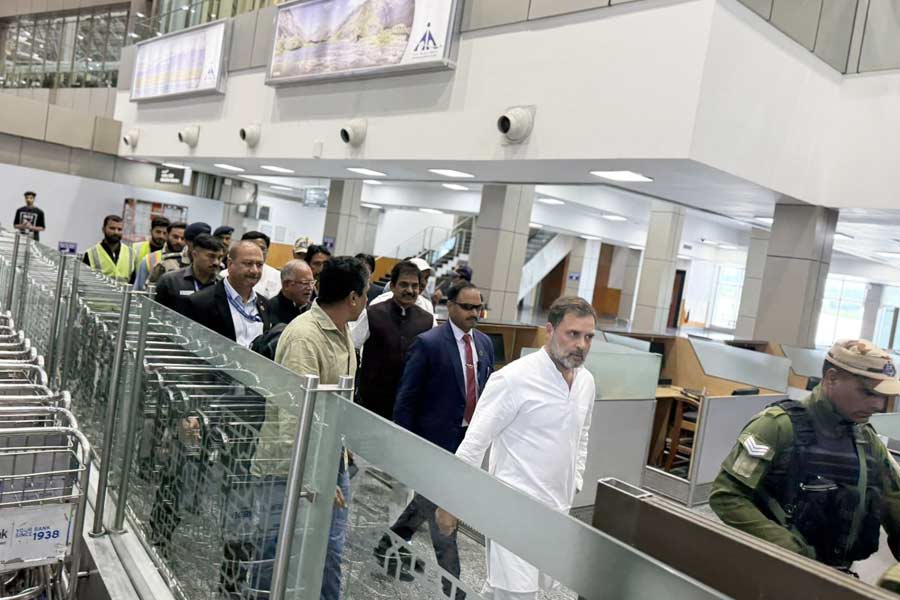|
|
| A temple in Denpasar |
The Temple of Segara Amrta on the ocean’s edge is a reminder that the Bharatiya Janata Party might fumble at the hustings and Nepal teeter on the edge of chaos, but Hinduism is alive and well on the island that Jawaharlal Nehru called “the morning of the world”. Surprisingly, there is no official Indian presence among the British, American, German and other consulates in Bali though Balinese acquaintances took us to Indian shops and spoke of the Brahma Kumaris, Sai Baba and a Gandhi peace centre.
Nevertheless, one cannot say in Bali, as Paul Wolfowitz did to Jaswant Singh, quoting Rabindranath Tagore on Muslim Indonesia, “I see India everywhere but find it nowhere.” Though the manifestations of its deities are unrecognizable, the names are not. Bali captures the essence of the enlightened Indian ideal. Birth does not deter caste mobility and, as a European scholar found, a believing mlechha can enter the ranks of the dwija if the Central Hindu Dharma Committee approves and a pedanda — priest — performs the appropriate purification rites.
Bob Hope and Bing Crosby in the Thirties film, The Road to Bali, the dream island of Bali-Hai in South Pacific, and the sex and sweat of Paddy’s Bar and the Sari Club where 202 white tourists were bombed to death are excrescences that have left no mark on Bali’s sublimity. Elsewhere in Asia, from Beijing to Bangkok, people idolize Westerners and pay them the supreme compliment of imitation. The Balinese do neither. They do not share the visceral hatred of whites that prompted Amrozi bin Nurhassyn, the Javanese Muslim whose trial took place on the island. They regret the Kuta bombings because tourists were frightened off. Then came the SARS scare. “We’ll be bankrupt if this continues!” they wail with no greater emotional involvement.
Perhaps there is a cultural explanation for this indifference to the tourist paradise. The mountains are where Bali’s gods live and where spirits return when released from the cycle of reincarnation or karmaphala. The sea is impure by contrast, and it is the sea that drew hordes of lusty young Australians who comprised 85 per cent of the tourist traffic. The beaches with their bars, discotheques, seafood restaurants and strolling musicians backed by shops and hotels were the altars of this new trade. The mountains, where temples nestle, bear witness to a 2,000-year-old faith whose symbol is the swastika, the wheel of the sun.
It makes for instant recognition. The grains of rice on my son’s forehead, placed there at the Pura Jaganatha, Denpasar’s relatively new temple, draws appreciative looks. A priest asks if I can recite the Gayatri Mantra. The girl who serves us dinner on Sindhu beach proudly says she is a “brahmana” and it is on a note of disapproval that the young man in the internet café exclaims that so many of his customers look Indian but claim to be from America. There is no dividend in being either a Westernized or a cock-a-hoop Non-Resident Indian. Bali is the only place in the world where a Hindu Indian is greeted with fraternal respect.
The island is so different from neighbouring Java that one cannot help but wonder if it aspires to return to its historically sovereign status when eight kings ruled the land. Timor Leste is independent and Aceh fighting a war against Jakarta. Rumblings can be heard from some of Indonesia’s 17,000 other islands. Indonesian Islam is exclusive enough for a Javanese politician to denounce Megawati Sukarnoputri “because she is a Hindu”. The reference is to her grandmother, a Brahmin Balinese from Singaraja, the old capital, who married a theosophist teacher. Sukarno was their son.
No Balinese that I spoke to said explicitly that he or she had never thought of independence. But one, more forthright than the rest, explained that Timor Leste was near Australia and enjoyed external support. Bali is in the heart of the archipelago. They laughed in embarrassment at the huge poster of Che Guevara that we saw on the road to mount Kintamani. Bali has no rebels and revolutionaries they insist.
Yet, the placidity could be deceptive in a land where villagers bet exuberantly on bloody cockfights under the shade of moss-covered temple parapets. In the walled courtyard of the family that once ruled the central Badung state, the last king’s daughter regaled us with tales of the massacre of September 20, 1906 when the king, his family and thousands of retainers, all dressed in ceremonial white, marched out to meet the Dutch army. The Dutch opened fire on “women with weapons in their hands, lance or kris, and children in their arms” who “advanced fearlessly upon the troops and sought death”. Two years later the royal family of Klungkung, highest of the eight kingdoms, similarly sought death in the ritual mass suicide called puputan. About 3,000 Balinese perished. When the Dutch tried to return in 1946, a freedom fighter, Gusti Ngurah Rai, and his followers staged another puputan.
If the Balinese knew how to die, they also knew how to inflict death. That was grimly evident in the late Sixties when hundreds of thousands of Partai Kommunis Indonesia members and their Chinese supporters were slaughtered throughout Indonesia. That was how Suharto replaced Sukarno. “In Java we had to egg the people on to kill Communists,” said Sarwo Edhy, the army general whom Australian newspapers called the Butcher of Java. “In Bali we had to restrain them.” PKI members dressed in white were led to their death as in a puputan. “It was all very orderly and polite,” wrote a Balinese observer.
This is not the place to recall how Hinduism spread to the Indianized states of southeast Asia, or how the faith receded in the face of militant Islam, though leaving behind an unmistakable cultural legacy. But much in “Farther India”, to use the Western term, justifies Upendra N. Ghoshal’s proud if not politically correct use of the description “Greater India”. No wonder we were told over and over again that rich Balinese travel to India to see the Ganges. “We call it tirthayatra,” they say, unaware that the word sounds all too familiar to Indian ears.
I was shown the card of a member of the Badung royal family who works at the International Academy of Indian Culture in New Delhi. Bali’s last governor, Ida Bagus Mantra, was educated in India. Despite Indian indifference to this distant offspring, many Balinese feel that the best way of strengthening their religious and cultural identity is by reaffirming their roots in the cultural metropole.
It is also interesting to reflect how India and China interacted even in ancient times. Legend tells of an 11th century Balinese king, Mayadanawa, who married a Chinese princess, converted to Buddhism and added her family name of Kang to his royal title. One version has it that the disapproving Hindu deities cursed her to be childless (mandul) whereupon she died and her heartbroken spouse erected a shrine to her memory in the temple on the shores of the island’s largest lake.
In a slightly different version, Mayadanawa fought back against the Hindu gods by creating a pond that poisoned them when they drank from it. But Indra hurled a thunderbolt into the ground, causing the antidote to spring up, which gave the Temple of Bubbling Elixir (Pura Tirtha Empul) its name. Religion is the symbol of a greater struggle for temporal power in both tales. Hinduism is also at bay in both. It is a contest that the Balinese adore, constantly enacting the fight between good and evil, between Barong, the mythological dragon, and Rangda, the mythological monster. Naturally, Barong always wins, testifying to the eternal optimism of a small and marooned society that has preserved itself against continuous assault, and whose trauma has received little Indian recognition since Nehru’s lyrical tribute.












